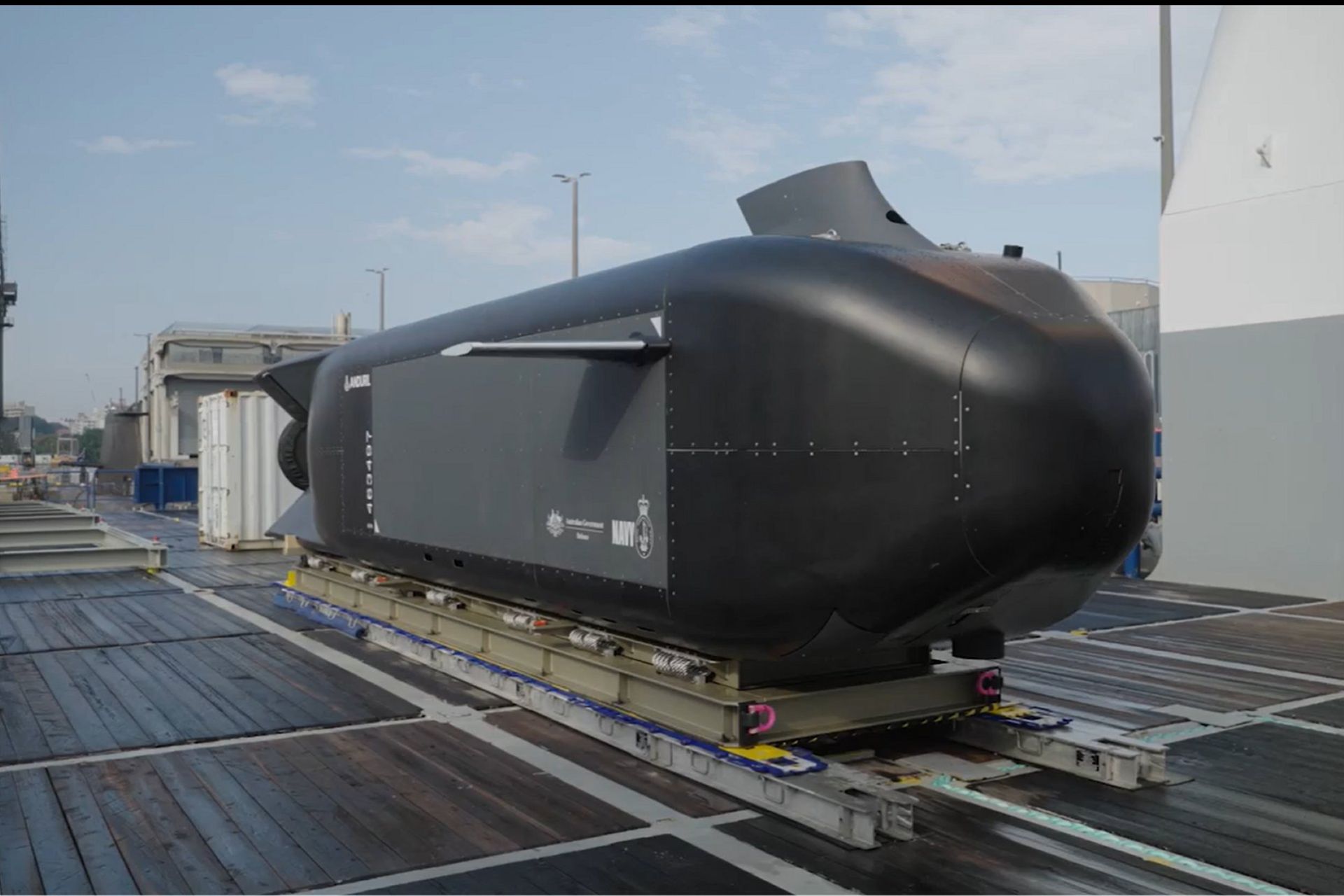Breaking News
Anduril Australia to establish first manufacturing facility for Ghost Shark AUVs.
According to a PR published by Anduril Australia on August 14, 2024, the company is set to construct its inaugural Australian manufacturing facility dedicated to the production of Ghost Shark Extra Large Autonomous Undersea Vehicles (XL-AUVs).
Follow Army Recognition on Google News at this link

Ghost Shark Extra Large Autonomous Undersea Vehicle. (Picture source: Australian DoD)
This facility will serve the Royal Australian Navy (RAN) and allied forces in the Asia Pacific region, and will also produce the commercial Dive-XL variant.
To expedite the readiness of Ghost Shark production, the Australian Department of Defence and Anduril Australia have entered into a co-funded Early Works Contract. The Australian Government has committed A$20.1 million. The aim is to transition the Ghost Shark program from its prototype phase to full production, with the first production units anticipated by the end of 2025, pending further government approval.
The Ghost Shark XL-AUV is envisioned to provide the RAN with a stealthy, long-range undersea capability, capable of conducting persistent intelligence, surveillance, reconnaissance (ISR), and strike missions. The ability to develop and deploy these systems on an operational timeline is deemed critical for safeguarding Australia's extensive maritime borders.
In April, Minister Conroy revealed that the first Ghost Shark prototype was completed ahead of schedule and within budget. The program is a collaboration between the RAN, Defence Science and Technology Group (DSTG), Advanced Strategic Capabilities Accelerator (ASCA), and Anduril Australia.
Australia's maritime borders
Safeguarding Australia's extensive maritime borders, which encompass around 35,000 kilometers of coastline and a maritime jurisdiction covering nearly 10% of the Earth's surface, is a complex and multifaceted challenge. The Australian Border Force (ABF) and the Australian Defence Force (ADF) play pivotal roles in this task, working together to monitor and protect this vast area.
The Maritime Border Command, a multi-agency task force led by the ABF, is central to maintaining maritime domain awareness and responding to threats.
This command employs a mix of aerial and surface assets, including Dash 8 surveillance aircraft and Cape-class patrol boats, to detect and deter illegal activities such as unauthorized arrivals, illegal fishing, and drug smuggling. The ADF complements these efforts with more advanced assets like the P-8 Poseidon maritime patrol aircraft and Jindalee Operational Radar Network (JORN) to provide a layered surveillance system.
However, the vastness of Australia's maritime domain presents significant logistical challenges. For instance, while unmanned aerial vehicles (UAVs) like the MQ-4C Triton offer long-duration surveillance capabilities, their high operational costs and the limited scope of their sensors mean that large areas remain unsupervised much of the time.


























